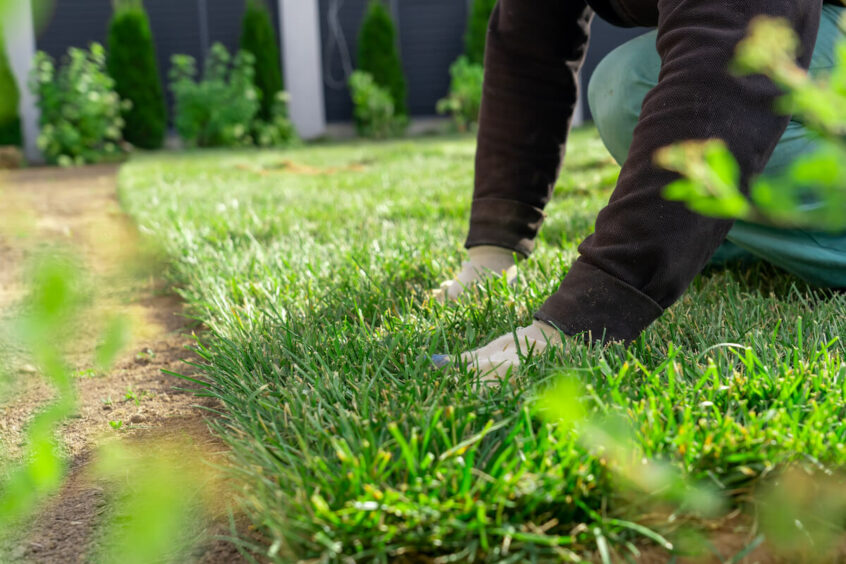Whether or not you can install sod in the winter depends on a few different factors. While sod is an easy way to transform your yard into a beautiful and green landscape, there are risks to installing in the winter that you should take into consideration. Depending on where you live, winter weather can be harsh. It’s important to consider whether or not the conditions in your area are going to be conducive to successful sod installation. With that in mind, here are the most important factors to consider before installing sod.
What is the Weather Like?
Your first consideration when installing sod in the winter is to take a look at the temperatures. Sod is a living plant; as such, it needs certain things to survive. Adequate temperatures, water supply, nutrients, and sunlight are all necessary for your new sod to take root and thrive. In general, you’ll want to wait to install sod until ground temperatures are consistently above freezing. Not sure what your local soil temperature is? Check out this Soil Temperature Tool [https://www.greencastonline.com/tools/soil-temperature] to see what the average soil temperatures are for your area! You will also need to make sure that the air temperature is regularly above freezing. Fresh-cut sod is vulnerable. Regular exposure to below-freezing temperatures will put it under strain and may lead to damage.
What Kind of Sod Do You Need?
The next important factor you need to consider is what type of sod you are going to use. Cold-season grasses, such as fescue or rye, are more cold-resistant than warm-season varieties are. Keep in mind that your grass will need to be able to withstand the weather in your region during ALL seasons of the year. For example, if you live somewhere with brutal summer heat, you probably shouldn’t choose a cold-season grass variety just because you’re eager to lay down sod in the winter. Consider the year-round health of your lawn before you place a sod order!
Check out Legacy Turf Farm’s list of available sod to learn more about each variety, including their cold-weather-hardiness.
Is There a Water Supply for Your Sod?
Finally, you need to consider the availability of water for your new sod. Sod needs a consistent water supply in order to establish itself in the ground and start to grow. If you live somewhere that experiences hard winter freezes, then you probably had your sprinklers blown out before the beginning of winter. A sprinkler blowout gets any residual water out of the sprinkler line. This is important to prevent your sprinkler lines from freezing or bursting. You shouldn’t start running your sprinkler system again until the weather has started warming up. If this is the case, then you probably aren’t going to have the irrigation necessary to keep your sod hydrated. If you don’t have to turn off your irrigation in the winter and/or you get a regular supply of rain in the winter, then you may have adequate water to keep your new sod hydrated in the winter.
So, Can You Install Sod In the Winter? It’s Complicated!
In conclusion, while it is technically possible to install sod in the winter, it’s very situational. It all depends on the temperatures where you live, what kind of sod you’re looking at, and if you’ll be able to keep it watered. If you can meet these conditions, then you should be able to successfully install sod in the winter.
If you’re ready to buy sod but you aren’t sure what type to get, get in touch with us! The team at Legacy Turf Farms is happy to give recommendations based on your location and your specific needs. We also offer sod delivery all around the Atlanta Metro area, and beyond!
